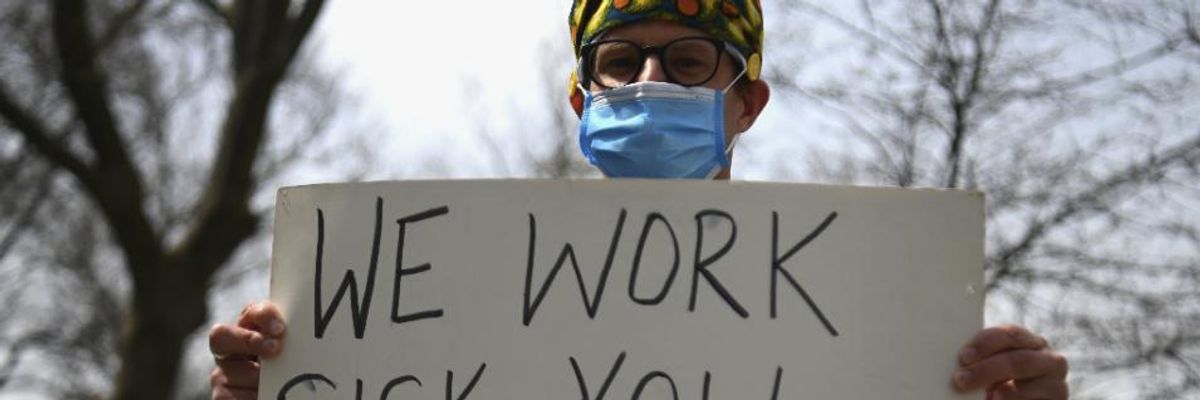Late last year, Congress allowed federal mandatory emergency paid leave benefits to expire. That left millions of American workers more vulnerable to catching -- and spreading -- COVID-19.
The Families First Coronavirus Response Act, passed in March 2020, required certain employers to provide employees two weeks leave at regular pay if they were experiencing COVID-19 symptoms or needed to quarantine because of exposure to the infection.
Employees could also take two weeks of leave at two-thirds of their regular wage level to care for someone else affected by COVID-19 -- and an additional 10 weeks of leave at two-thirds pay to care for a child whose school or child care provider was closed due to the virus.
To help private companies cover the cost, the law offered credit against payroll taxes for 100 percent of paid leave wages.
One study found that by allowing sick people to stay home and quarantine, the legislation prevented 400 COVID-19 cases per day per state -- or more than 15,000 cases per day nationwide. But while the pandemic rages on, Congress allowed mandatory emergency leave to expire on December 31, 2020, leaving it up to employers to decide whether to offer the benefits.
Women, workers of color, and low-wage workers will be hardest-hit by the loss of mandatory benefits. They are heavily represented in frontline jobs and women tend to shoulder family care-giving responsibilities.
Pronita Gupta, the director of job quality at the Center for Law and Social Policy, points out that women are now either the sole or co-breadwinner in 64 percent of families, and that share is even higher in families led by women of color.
"If these co- or sole breadwinners have to make this untenable choice between caregiving and their own health or going to work, we're going to see more women leaving the workforce because they have to take care of the families," Gupta says.
Postal workers on the frontlines also relied heavily on the mandatory leave benefits. Unlike most other federal employees, they are not covered by the 2019 Federal Employee Paid Leave Act. In December 2020, nearly 19,000 postal workers were under quarantine after testing positive for the virus or after exposure to the infection.
Without the mandatory federal emergency leave policy, more postal workers would've had little choice but to go to work even if they knew they might be a risk, driving up the infection rate for themselves -- and their customers.
Democrats are promising to move quickly on another COVID-19 relief bill that would provide $2,000 stimulus checks to individuals. This bill should also renew the now-expired mandatory paid leave benefits. While they're at it, lawmakers should close a glaring loophole in the original bill.
The Families First Coronavirus Response Act excluded companies with more than 500 employees from the paid leave requirements. That left out more than half of all U.S. workers.
In the first week of January, some 800 distribution center workers for Albertsons, the second-largest U.S. grocery chain, held protests in Texas and Arizona to demand better COVID-19 protections, including adequate paid leave.
Albertsons, the parent company of Safeway, Jewel, and other groceries, is just one of many major employers that have thrived under the pandemic and have no excuse for skimping on paid leave benefits.
With consumers stocking up on food and eating out much less, the chain's profits and share prices have soared, boosting the fortunes of top executives. Less than two years into the job, CEO Vivek Sankaran holds company stock worth nearly $33 million.
If we are to conquer COVID-19, companies need to put public health above CEO profits.
